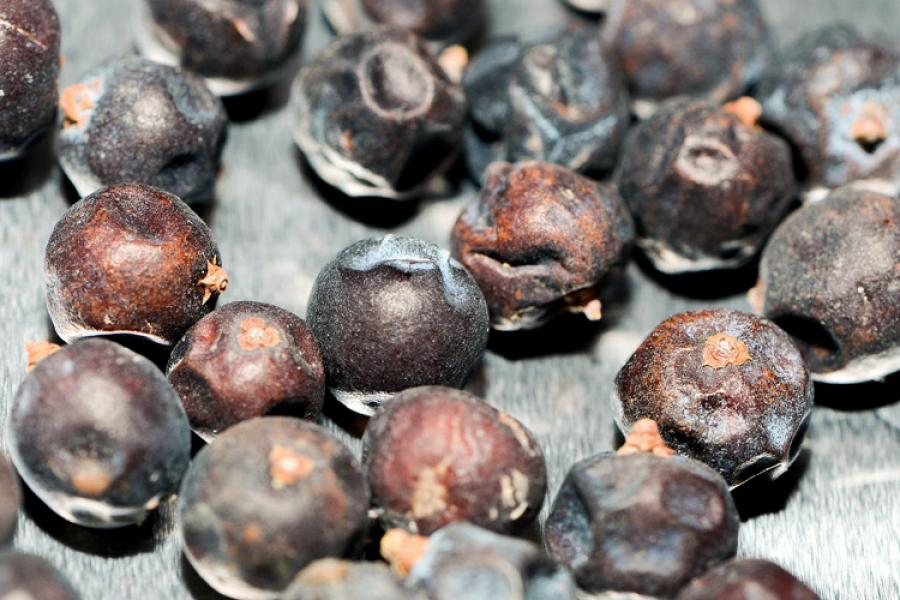Juniper
Juniper berries are mainly used in Northern European cuisine where they add their sharp flavor to meats, especially game and wild birds but also pork, and the regional vegetables, such as cabbage.
Facts
Juniper berries, the ones used to flavor gin or pacharán, are a common spice in northern Europe. Used since Greek and Roman times until 1500s for its medicinal properties -it was supposed to cure from the plague to snake bites- it now adds flavor to many dishes, particularly in northern European cuisines.
How to identify juniper
Juniper berries are the fruit of evergreen coniferous bushes -or trees- with green, very prickly leaves. When ripe, berries are blue-black and round, with a 1/4 (7 mm) diameter. Berries take 3 years to mature.
How to use and store
Usually available as whole berries, but they are easily crushed. If held in an airtight container, the berries keep almost forever.
Juniper is mainly use to flavor strong meats such as those of game, but it also goes well with pork and some beef dishes, especially stews and winter casseroles. Often an ingredient in patés where is happily married to chestnut and fruits. Juniper jelly can make a change to redcurrant jelly.
The berries are usually crushed before being added to dishes, but they are used whole as pickling spice, in marinades or broths. The flavor is very intense, use only a few berries at a time.

